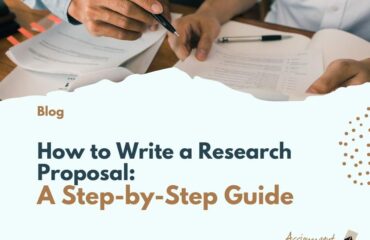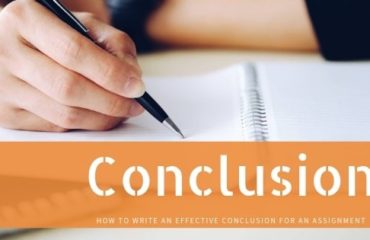
There are various types of referencing and citation styles, one that is widely used by students in social and behavioural sciences is called APA (American Psychological Association). The APA 7th edition guideline provides students and researchers with clear instructions for formatting documents and citing sources, ensuring effective communication in academic writing. This guide on APA referencing will walk you through the important elements of APA referencing style, which will help you create well-structured and properly referenced papers.
Table of Contents
1. Paper Formatting
To adhere to APA guidelines, it is important to follow specific formatting rules throughout the paper. These rules include:
- Setting page margins
- Line spacing
- Paragraph indentation
- Font usage
- Page numbers
Page Margins
Set the page margins to 1 inch on all sides of the document. This uniform margin width ensures consistency and readability.
Line Spacing
Double-spacing is required for the entire text, including headings. This practice enhances readability and allows for easy identification of different sections within the paper.
Paragraph Indentation
Indent the first line of every paragraph by 0.5 inches. This indentation helps to visually separate paragraphs, making the text more organised and reader-friendly.
Font
Use an accessible font for your paper, such as Times New Roman (12pt), Arial (11pt), or Georgia (11pt). These fonts are widely accepted and ensure legibility.
Page Numbering
Include a page number on every page of your paper, typically in the top-right corner. This allows readers to navigate through your document easily.
2. Setting up APA Format
When you are setting your document in APA format, it is important to consider alphabetization rules for reference and use appropriate templates to ensure consistency.
APA Alphabetization Guidelines
References should be arranged in alphabetical order by the last name of the first author. If there is no author listed, then order the reference by the first word of the title, excluding articles like “the,” “a,” or “an.”
APA Format Template
To make the process of setting up APA format simpler, you can use preformatted templates. These templates help you in structuring your paper correctly, including the title page, abstract, headings and other important elements.
3. Headings and Subheadings
Headings and subheadings play an important role in organising your paper and help guide readers through the paper. In an APA paper, you can use five levels of heading and each level is formatted differently. Heading level 1 is used for main sections while heading levels 2 to 5 are used for subheadings. Using headings and subheadings is important as it provides your writing clarity and ensures logical flow.
4. Title Page
The title page is the first page of your APA Style paper and contains essential information about your work. The requirements for the title page differ slightly for student and professional papers.
Student Paper
For a student paper, you will include the following:
- Paper title
- Author’s name
- Course number and name
- Instructor’s name
- Due date of the assignment
These details help identify and categorise your work within the educational context.
Professional Paper
A professional paper intended for publication includes the following:
- An author notes
- Running head
- Paper title
- Author’s name
The author’s note provides information about the author’s affiliations, acknowledgements, or any other relevant details. The running head is a shortened version of the paper title, written in all capital letters.
5. Abstract
The abstract is a concise summary of your work that is typically 150 to 300 words. Professional papers often include an abstract while student papers typically don’t have one unless they are extensive, such as theses or dissertations. The abstract is a brief overview of the purpose, methods, results and conclusion of your research which allows readers to understand the main points quickly.
6. Table of Contents
Although APA style does not mandate a table of contents, you can include it if required by your instructor or publisher. If you are including it then place the table of contents on a separate page after the abstract and label the section with “Contents” at the top. List important headings as well as their corresponding page numbers to help make it easy for readers to navigate your document.
Citations
There are two types of APA in-text referencing/citations:
- Parenthetical citation: According to new research … (Allen, 2020)
- Narrative citation: Allen (2020) notes that …
If there are multiple authors or an organisation as an author then the in-text citation changes slightly.
|
Author type |
Parenthetical citation |
Narrative Citation |
|
One author |
(Allen, 2020) |
Allen (2020) |
|
Two authors |
(Allen & James, 2020) |
Allen and James (2020) |
|
Three or more authors |
(Allen et al., 2020) |
Allen et al. (2020) |
|
Organisation |
(Assignment Studio, 2020) |
Assignment Studio (2020) |
In case, the author, publication date or locator is unknown, you can take the steps outlined below:
|
Missing elements |
What to do |
Parenthetical citation |
|
Author |
You can use the source title |
(Source Title, 2020) |
|
Date |
Write “n.d.” for “no date”. |
(Allen, n.d.) |
|
Page number |
Use an alternative locator or don’t include the page number |
(Allen, 2020, Chapter 5) or (Smith, 2020) |
7. References
The APA reference page lists all the sources you have cited in your paper. Creating accurate and properly formatted references is essential to avoid plagiarism and give credit to the original authors. APA provides guidelines for formatting references and the reference page itself.
Creating APA Style References
Accurate referencing is crucial in academic writing. Generally, you include information such as the author, publication date, title and source. You may have to include extra information for some sources to help readers locate the source.
|
Allen. S. (2020). The referencing and citation rules for students: A comprehensive guide (2nd ed.). Wiley. |
Formatting the Reference Page
On a separate page, write the section labelled “References” at the top. Arrange the reference entries alphabetically, based on the last name of the first author. Apply the following:
- Double spacing (within and between references)
- Hanging indent of 0.5 inch
- Legible font (e.g. Times New Roman 12 or Arial 11)
- Page number in the top-right header
8. Tables and Figures
Tables and figures are effective visual aids that enhance the presentation of data in your paper. When incorporating tables and figures, provide a clear title and number them accordingly. Tables and figures should be simple and easy to understand, with minimal use of unnecessary design elements. Ensure that you provide explanatory notes when necessary to aid readers’ comprehension.
Conclusion
Adhering to APA formatting and citation guidelines is essential for clear and effective communication in academic writing. By following the rules outlined in this comprehensive guide, you can ensure that your papers are well-structured, properly referenced, and compliant with APA standards. If you are still confused and having trouble with APA formatting and citations, you can always turn to Assignment Studio for help, they will make sure that your paper is properly formatted and adhere to the referencing and citation guidelines.







